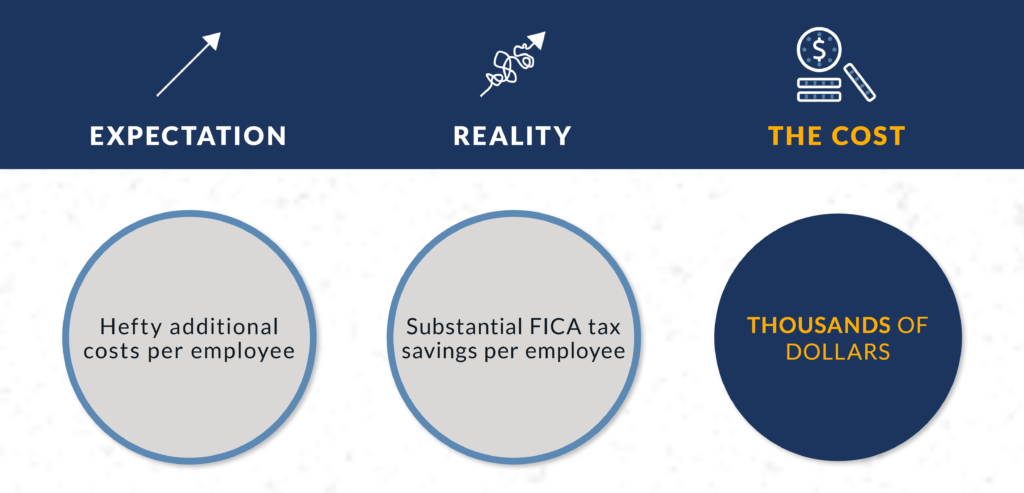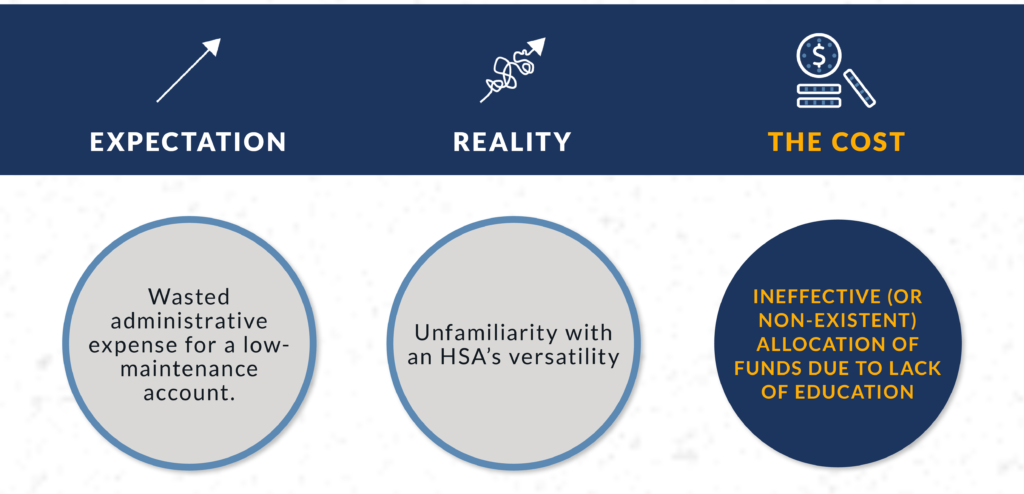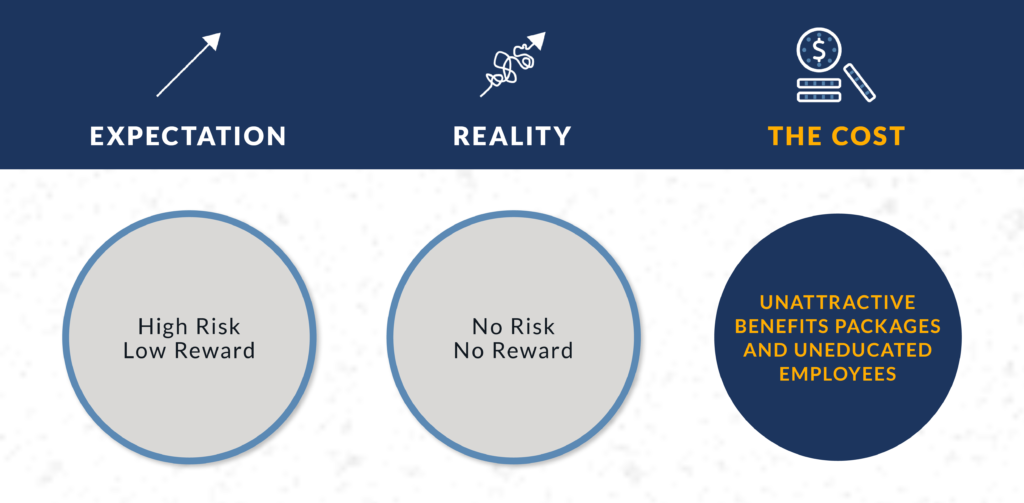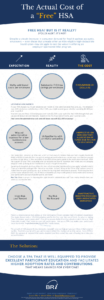Free Health Savings Account? But is it really?
Spoiler Alert: it’s not!
Download our full infographic below to learn about the actual cost of a free HSA:
Despite a steady increase in consumer demand for health savings accounts, employers—even those that already offer an HSA-eligible high-deductible health plan—may struggle to see the value in offering an employer-sponsored HSA program.
Cost #1: Show Me the Money

Let’s look at some numbers:
If your TPA charges $2.75 per employee per month in HSA administration fees and you, the employer, have 100 employees contributing to their HSA, you might second guess whether spending $3,300 per year is worth it.
Now, let’s assume those 100 employees contribute $2,000 a year each into their HSA through their pre-tax payroll deduction contributions. Based on the FICA tax rate of 7.65%, you’ll save $15,300.
That covers the administrative costs and still leaves you with $12,000 in savings!
Cost #2: Hide-and-seek

The similarities between an HSA and a 401(k) lead many to believe they are both equally hands-off. While a 401(k) is basically the crockpot of savings accounts where you can set your contribution amount and then forget about it, the versatility of an HSA allows participants to be much more involved. With the support of your TPA, educating your participants on how to maximize their HSAs and encouraging adoption ends up being as low maintenance as you thought it would be!
Speaking of education, don’t you think it’s time to find out what “additional fees may apply” actually entails? Does your benefits package offer the value you think it does? Many of the “Free HSA” options result in hidden fees for your participants, such as fees for moving their investments around. These surprise fees can hurt adoption rates. Plus, if these are benefits you’re providing, does it really make sense to make your participants pay out of pocket just to use them?
Pro Tip: Make sure you’re choosing the right benefits administrator who can clearly identify fees and point out any hidden fees.
Cost #3: Risky Business

There’s a misconception that adding an HSA will lead to a more complex Open Enrollment experience. One study showed only a 12% HSA adoption rate in 2018. So why risk making Open Enrollment more complicated? One of the reasons behind that low adoption rate is because “High Deductible Health Plan” tends to scare off participants. Select a TPA that helps your participants learn what “High Deductible Health Plan” really means.
The growth of HSA popularity is undeniable, especially once we help get you over those initial adoption hurdles. Don’t let your benefits package become outdated by leaving out an HSA option. From 2018 to 2020 the amount of invested HSA assets doubled (and then some!) because of having more educated account holders.
The Solution
Choose a TPA with excellent participant education resulting in higher adoption rates and contributions.
That means savings for everyone!




